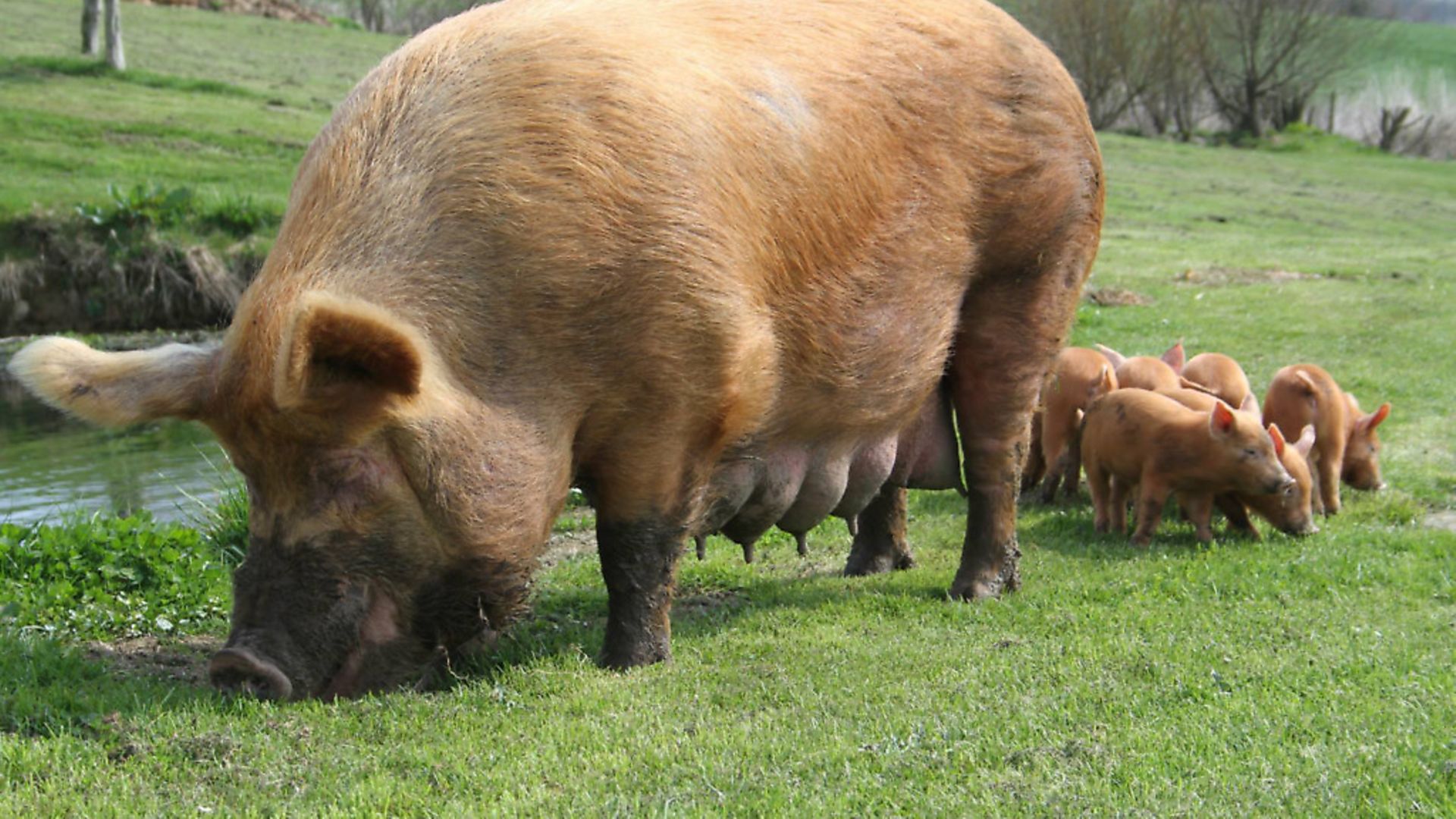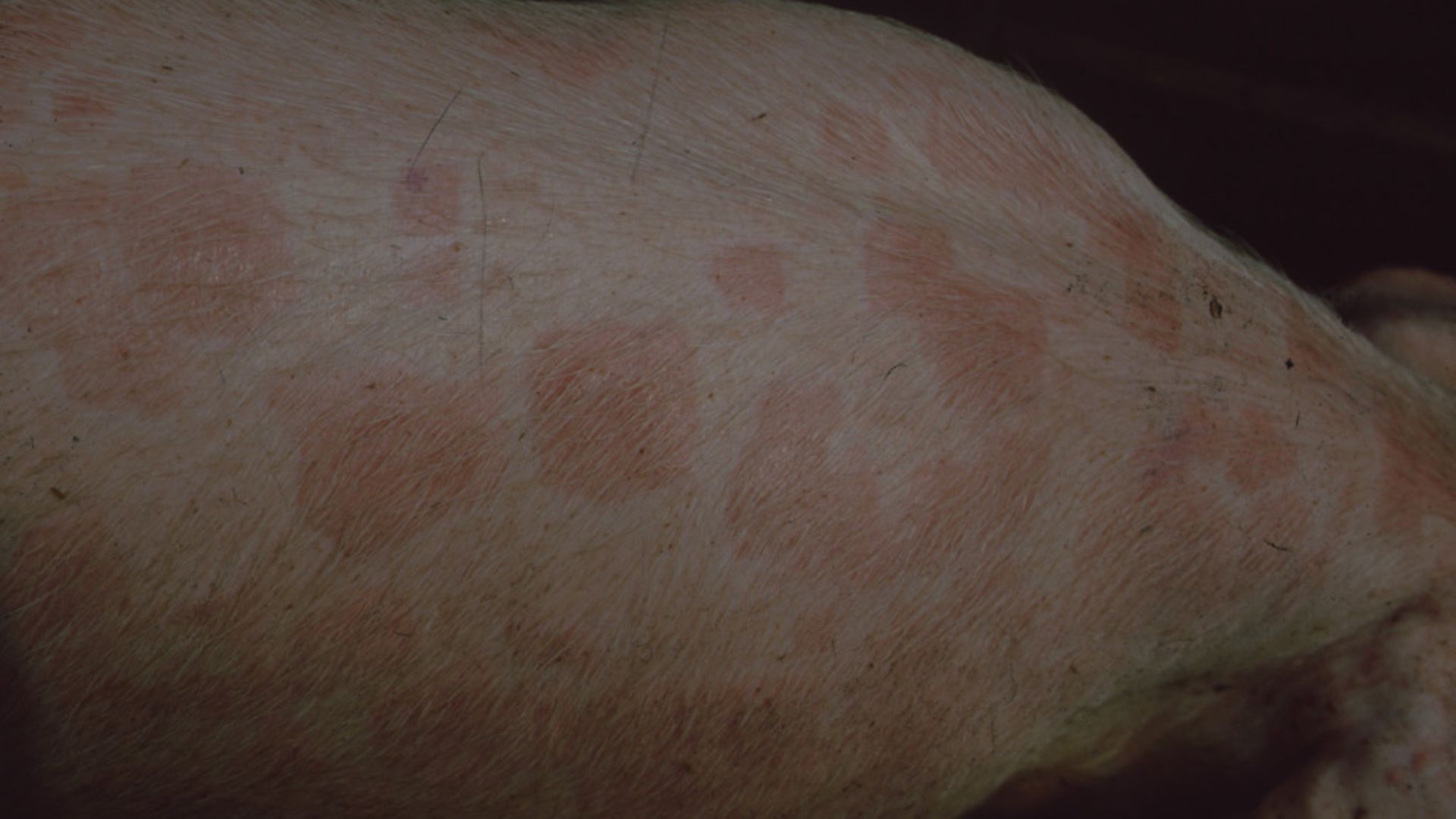Liz Shankland continues her guide to improving herd productivity, this time investigating the importance

Breeding from only the best pigs, understanding the breeding cycle and taking extra care of the sow post-mating are all things I recommend when giving advice to those new to breeding. Last month (Country Smallholding, July 2018), I highlighted some common sense ways of helping your sows produce bigger litters — and, hopefully, better returns for your smallholding enterprise. However, there is one final, vital part of the jigsaw — ensuring that you maintain a healthy herd.
Small litter sizes can be the result of a whole host of things, some of which may be out of your control, but protecting your pigs from disease is something you can —and should — do. There are, unfortunately, several common diseases which can have an impact on fertility and the viability of a pregnancy.
Some diseases can be deceptive, with pigs showing no physical symptoms. Often those that can have the most devastating impact on reproduction are only evident at farrowing time, when stillborn or mummified piglets appear, or when only a handful of live piglets are born.
Two of the most prevalent diseases which can cause (among other things) serious reproductive problems are swine erysipelas and porcine parvovirus (PPV). Both can be introduced when you buy in new stock, hire in a boar, or take your pigs to shows. The good news is that there are vaccines available.

What is erysipelas?
Erysipelas is an infectious disease which has a serious detrimental effect on reproductive ability in sows and boars, as well as lameness, arthritis, heart disease
— and death. It can affect humans, other mammals and even birds.
Text books often warn pig keepers to look out for raised skin lesions shaped like diamonds or rhomboids, but, in fact, lesions aren’t always evident. Unfortunately, erysipelas can be one of those hidden diseases. Sometimes infection does not cause obvious health problems, so other factors may be blamed for failed pregnancies or disappointing litters. The bacterium which causes the disease — Erysipelothrix rhusiopathiae — is easily transmitted between animals. It has been estimated that up to 50% of all healthy pigs are carriers and, once it has been introduced into a herd, there is no getting rid of it. The bacterium lives in the tonsils and is transmitted through saliva, faeces or urine. It can live outside the pig for several months, surviving in faeces and in the soil and in contaminated feed, bedding and water. Stress or viral infections can make a pig more susceptible. If it is discovered at the abattoir, carcasses can be condemned.
The effects vary according to the age of the pig and the stage of pregnancy, but symptoms can include:
• Failed pregnancies and abortion
• Small litter sizes
• Large numbers of stillborn piglets
• Mummified piglets
• Infertility in boars
• Severe and recurring lameness — affecting mobility and so ability to mate
• Sudden death — usually due to acute septicaemia or heart failure.
In the acute form of the disease, the organism gets into the blood stream and causes septicaemia, resulting in fever, stiffness while walking, or a reluctance to get up. In severe cases, the disease spreads so fast that a pig which previously showed no signs of ill health will simply be found dead. As the organism multiplies in the blood stream, it blocks the blood vessels, causing raised, diamond-shaped or oval blotches which can be pink, dark red, or purple. The lesions finally turn black as skin tissue dies. In the chronic form of the disease, arthritis develops in the joints and infection of the heart valves can cause heart failure.
Prevention and cure
Vaccination: As erysipelas is so widespread and so potentially damaging, vaccination is recommended. Penicillin is effective against erysipelas if it is diagnosed at an early enough stage, but vaccination against it is a much more sensible course of action. The most common vaccine is Porcilis® Ery. Breeding stock should be given an initial course of two separate vaccinations, four weeks apart, followed by booster vaccinations every six months or during each lactation. Boars and gilts should be vaccinated at least two weeks before mating.
Treatment: As stated above, erysipelas can be tackled effectively with penicillin if diagnosed sufficiently early. In acute cases, a fast-acting penicillin injected twice in the first 24 hours should be given, followed by daily injections for three to four days. In non-acute cases, pigs can be treated with a long-acting type.
Porcine parvovirus (PPV)
Another preventable reproductive disease is porcine parvovirus. This kills developing piglets in the uterus and is widely believed to be the most common and most significant cause of reproductive failure. Around 90% of breeding herds in the UK have it. It is transmitted through the nose or mouth, passes into the intestine and is shed in faeces. Within three weeks of infection, it crosses the placenta and attacks the developing embryos and foetuses.
Unlike most viruses, PPV is incredibly resilient and can survive outside of a pig for several months. It is also resistant to most disinfectants. Its effects depend on the stage of pregnancy. Gilts are most susceptible to PPV at around four or five months old when maternal antibodies start to decline. They should ideally be vaccinated at five months old and always before being put to the boar for the first time. Sows develop immunity either by vaccination or through physical exposure to the virus, but there can be exceptions. Boars, too, need to be vaccinated. Although PPV does not have a detrimental effect on semen quality, the virus can still be transmitted in boar semen.
Protection against PPV
Porcilis® Ery + Parvo is a combined vaccine which protects against both PPV and erysipelas. The manufacturer recommends vaccinating all breeding stock, either at weaning, or at least two weeks before mating. A single injection prior to mating should protect against PPV, but to achieve protection against erysipelas as well a further injection should be given four weeks later, with either the combined vaccine or the erysipelas-only version. As mentioned earlier, sows should be revaccinated against erysipelas during each lactation period (or every six months), but PPV requires just an annual booster.
Liz Shankland is the author of the Haynes Pig Manual and she teaches courses in smallholding and pig husbandry at Humble by Nature.
Image(s) provided by:
Archant
Archant







